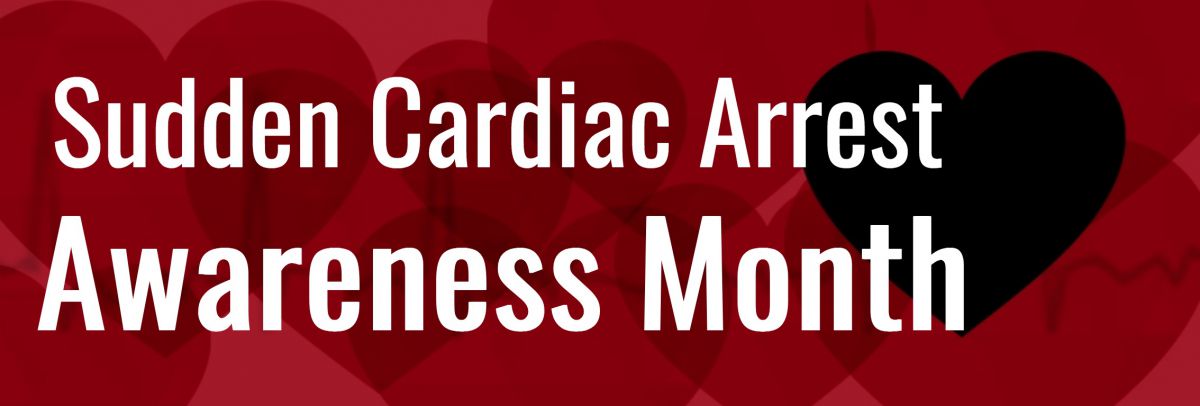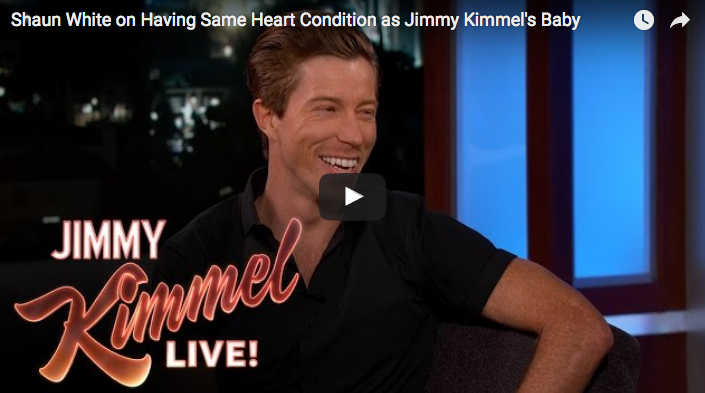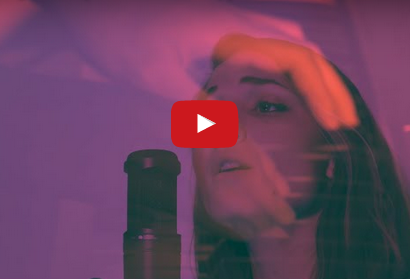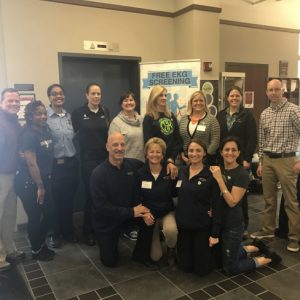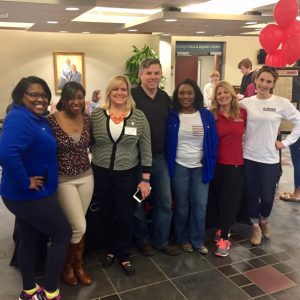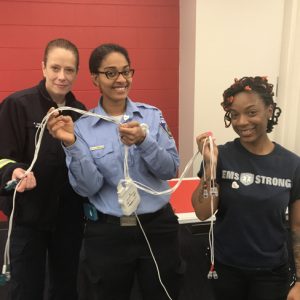For the third year in a row, 8News teamed up with the Ryan Lopynski Big Heart Foundation to offer free heart screenings to hundreds of area teens. This year’s event was held at the University of Richmond.
8News teams up with Ryan Lopynski Big Heart Foundation to offer free heart screenings
Adrenaline Shot Can Save Lives After Heart Stops, But at a Heavy Price
“This article outlines better ways to treat SCA as opposed to the Adreneline Shot. Rather than having to treat SCA wouldn’t it make more sense to prevent it all together? So….why not get your heart screened today?”
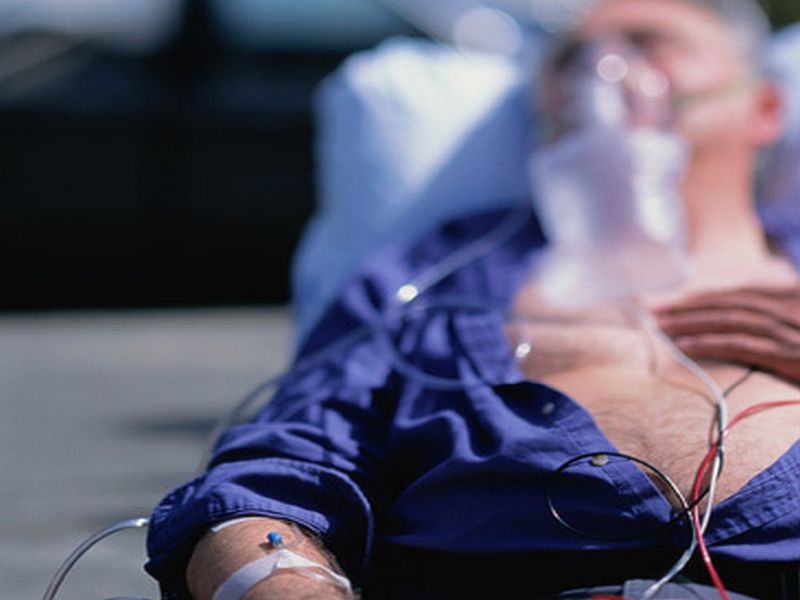
THURSDAY, July 19, 2018 (HealthDay News) — An adrenaline shot can restart your heart if it suddenly stops beating, but a new trial shows that chances are you might not return to much of a life if you survive.
People who suffered cardiac arrest and were resuscitated with adrenaline had an almost doubled risk of severe brain damage, researchers found.
“We found adrenaline does not increase your chances of surviving without severe brain damage,” said lead researcher Dr. Gavin Perkins. He is a professor of critical care medicine at the University of Warwick Medical School in England. “In fact, of the survivors, twice as many have severe brain damage.”
The findings should prompt major medical societies to rethink guidelines for using adrenaline ( or “epinephrine”) to restart a stopped heart, Perkins said.
Heart expert Dr. Vinay Nadkarni agreed that the American Heart Association and the International Liaison Committee on Resuscitation should consider this clinical trial in future revisions of guidelines for treating cardiac arrest.
“There is concern that with the current pragmatic approach, there is risk for more survivors with severe neurologic impairment, something that the public would not want,” said Nadkarni, chair of pediatric critical care medicine at the Children’s Hospital of Philadelphia.
“But it does not mean that we should necessarily throw the baby out with the bath water,” Nadkarni continued. “There still may be an important role for [adrenaline] earlier in resuscitation or combined with other effective therapies.”
More than 350,000 cardiac arrests occur in U.S. communities every year, the American Heart Association says. Only about one in 10 victims survive.
During the trial, paramedics with five United Kingdom ambulance services randomly gave more than 8,000 cardiac arrest patients either adrenaline or a placebo after cardiopulmonary resuscitation (CPR) and defibrillation failed to restart their hearts.
The trial was inspired by evidence that’s emerged in recent years suggesting that adrenaline could harm the brain while jump-starting the heart, Perkins said.
“There’s some experimental data which show that epinephrine is helpful in raising the blood pressure and potentially restarting the heart, but it reduces the blood supply to the small blood vessels in the brain, potentially worsening brain injury,” Perkins said.
Adrenaline slightly improved a person’s chances of survival, the findings showed. About 3.2 percent of patients given adrenaline were alive a month after their cardiac arrest, compared with 2.4 percent of those who received a placebo.
Unfortunately, that survival advantage came at a cost to the brain.
About 31 percent of survivors in the adrenaline group had either moderately severe or severe brain damage, compared with 18 percent of those in the placebo group, according to the report.
That includes severe brain damage in about 21 percent of those receiving adrenaline versus 9 percent of those receiving placebo, the researchers said. In that category, survivors are bedridden, incontinent and require constant nursing care and attention.
“We found that adrenaline could restart the heart, but it was no good for the brain,” Perkins said. “The extra survivors are in a poor neurological state.”
Perkins believes that many people would not want to survive in this state, based on a survey his team conducted prior to the clinical trial.
“About 95 percent of the people we spoke to said that surviving without brain damage is more important than simply surviving,” Perkins said. “It’s a very complex question that partly depends on the value that an individual or society puts on survival versus survival with brain damage.”
Experts would do better to promote other lifesaving methods of treating cardiac arrest that have proven more effective than adrenaline, Perkins said. These mostly involve educating all potential bystanders to:
- Recognize cardiac arrest and dial 911, which is 10 times more effective than adrenaline.
- Start compression-only CPR, which is eight times more effective than adrenaline.
- Use an automatic defibrillator, which is 20 times more effective than adrenaline.
“We already have things out there that are much more effective, but they’re not universally used by members of our community,” Perkins said. “In the minutes before an ambulance arrives, it’s really our communities who can make a big difference in saving lives.”
Nadkarni agreed that focus should be placed on these bystander-centered responses to cardiac arrest.
But adrenaline still might be useful if given earlier in treatment of cardiac arrest, rather than after other resuscitation attempts have failed, Nadkarni added.
“I don’t think we should abandon it altogether,” Nadkarni said.
The findings were published online July 18 in the New England Journal of Medicine.
More information
The American Heart Association has more about cardiac arrest.
SOURCES: Gavin Perkins, M.D., professor, critical care medicine, University of Warwick Medical School, U.K; Vinay Nadkarni, M.D., chair, pediatric critical care medicine, Children’s Hospital of Philadelphia; July 18, 2018, New England Journal of Medicine, online
Last Updated:
Copyright © 2018 HealthDay. All rights reserved.
A Save of Olympic Proportions
A Save of Olympic Proportions: Paul Wylie’s Comeback from Sudden Cardiac Arrest is a Reminder of the Importance of Learning CPR, Especially During February, Heart Month
Three years ago, figure skating Olympian Paul Wylie overcame a substantial disadvantage and survived Sudden Cardiac Arrest, thanks to immediate CPR from one of his workout buddies. To help save more lives, the Sudden Cardiac Arrest Foundation urges the public to commit to learn CPR now, during Heart Month.
Sudden Cardiac Arrest (SCA) is the third leading cause of death in the U.S., according to the Institute of Medicine. The life-threatening emergency occurs when the heart unexpectedly stops beating. According to the latest statistics from the American Heart Association, SCA affects more than 356,000 people of all ages outside hospitals each year in the U.S., and nearly 90 percent of cases are fatal.1Because survival from cardiac arrest is still relatively uncommon, stories of survival frequently make the news. One such story is that of Paul Wylie, an Olympic skater, who won the silver medal in men’s figure skating at the 1992 Winter Olympic Games. Wylie is now a commentator on figure skating at the XXIII Winter Olympics in Pyeongchang, South Korea.
Wylie suffered cardiac arrest when he was out for a run in 2015. He overcame a substantial disadvantage and survived—thanks to one of his workout buddies who gave him CPR. In nominating his rescuer for an award from the Sudden Cardiac Arrest Foundation, Wylie said, “As an Olympic Silver medalist, I know well what it means to work hard, really hard. I have performed in countless high-pressure situations. Yet, I can think of no more important role than to commit all my mental energies and physical strength to save someone else’s life. That is what Billy Griggs did for me on April 21, 2015.”
In Wylie’s case, as in so many other stories of survival, immediate bystander care made the difference between life and death. While, on average, only one in 10 victims of sudden cardiac arrest survives, bystanders can double or triple a person’s chance of survival by giving CPR immediately.
“In the event of a sudden cardiac arrest, it is very important for the public to respond,” according to Michael C. Reed, MD, an interventional cardiologist at the International Heart Institute of St. Patrick’s Hospital Providence in Missoula, Montana, who serves on the Sudden Cardiac Arrest Foundation Advisory Council. “If someone has a sudden cardiac arrest, bystanders should call 911, give CPR, and if an AED (automated external defibrillator) is available, use it immediately.”
The Sudden Cardiac Arrest Foundation urges the public to commit to learn CPR now, during Heart Month.
1Heart and Stroke Statistics 2018 Update: A Report from the American Heart Association, Circulation, Jan. 31, 2018
A heart condition ended his college basketball career. It took transferring to discover it.
On the September night his basketball career ended, Jaylen Brantley arrived at his mother’s home in Springfield, Mass., for a family dinner that seemed to have only one rule: There would be no discussion of the sport that had defined his life for 24 years.
They would not talk about Brantley’s obsession with basketball from the time he was a toddler — one of his first words muttered was “shooting” — through his rise as a high school prospect in the Boston area. They would not talk about his nomadic path through college basketball, which took him from Marshall to a junior college in Texas to Maryland and finally to Massachusetts, where he transferred for his final year of eligibility to be closer to home this past spring.
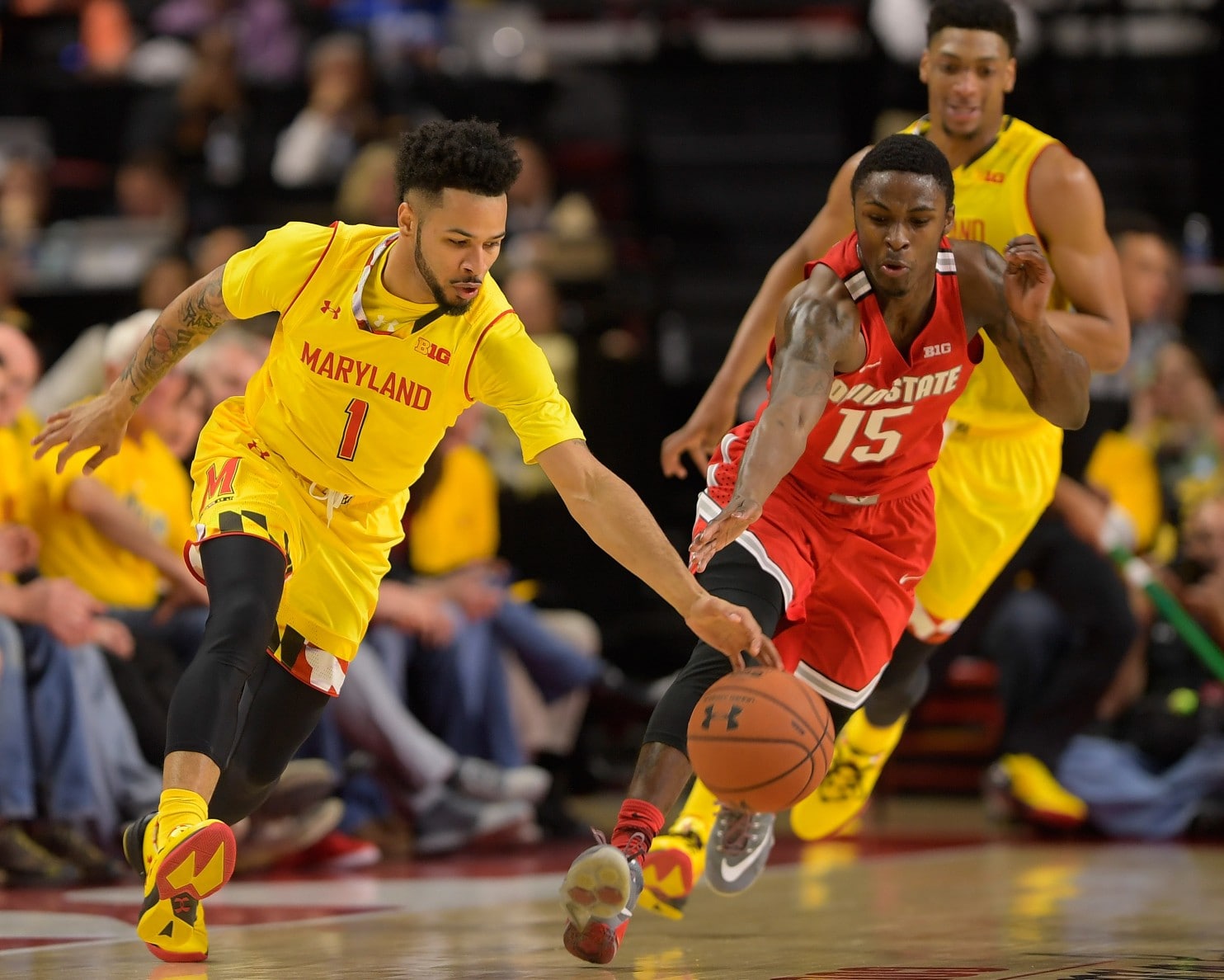 And they certainly wouldn’t talk about the news that was delivered earlier that afternoon, when a doctor at Massachusetts General Hospital told Brantley that he had hypertrophic cardiomyopathy, a condition in which heart muscles become abnormally thick and can make it difficult for the heart to pump blood. Brantley stood stone-faced as the doctor explained this would end his playing career.
And they certainly wouldn’t talk about the news that was delivered earlier that afternoon, when a doctor at Massachusetts General Hospital told Brantley that he had hypertrophic cardiomyopathy, a condition in which heart muscles become abnormally thick and can make it difficult for the heart to pump blood. Brantley stood stone-faced as the doctor explained this would end his playing career.
“I didn’t know what to say,” he said. “I was really just confused of how fast the game was taken away from me.”
In the days after, as Brantley began to comprehend his new reality, he was grateful just to be alive. He was also struck by the fact that had he not transferred to U-Mass. last spring, he might never have known about a condition that could have killed him. It was first discovered through an electrocardiogram (EKG) test by U-Mass. team physicians during a routine physical before the start of preseason practice.
Brantley also found that his condition was at the center of what has become a national debate. U-Mass.’s physical screening protocol requires that all athletes receive an EKG test, which evaluates the electrical activity of the heart, but that is far from the norm in major college athletics.
According to the NCAA, roughly half of the 65 schools in the Power Five conferences conduct EKGs. The NCAA’s chief medical officer, Brian Hainline, recommended in 2015 that all college basketball players be given EKGs — only to later backtrack on that announcement and draw protest from more than 100 team physicians across the NCAA.
[Jenkins: College sports’ real criminals: Those getting rich under the guise of ‘amateurism’]
Sudden cardiac arrest among NCAA athletes has long been a simmering concern; it certainly has been in the national conscience since 1990, when Loyola Marymount star Hank Gathers collapsed during a game and died of a heart attack resulting from hypertrophic cardiomyopathy.
Advocates believe EKG testing is a crucial and accurate measure to prevent sudden cardiac arrest; opponents argue that many schools do not have the resources to commit to accurate EKG testing. The American Heart Association has not endorsed uniform testing because sudden cardiac arrest among young athletes simply isn’t prevalent enough.
“Some places don’t have the resources to read [EKG’s] correctly. If you read them correctly, there’s a very low false-positive rate. You’re still going to miss some things. But some people and places just don’t have the resources to do that,” said Kim Harmon, who is the head physician for the University of Washington football team and has researched sudden cardiac arrest for much of her medical career. “The fact of the matter is it is really, really unlikely that you’re going to find something that is going to kill people” based off only a patient’s history and a routine physical.
The risk of sudden cardiac death in Division I men’s college basketball players or African American men’s basketball players at any division is as high as 1 in 5,200, according to a 2016 report commissioned by the NCAA that was led by a task force of cardiovascular and sports medicine experts, student-athletes and athletic trainers and published in the Journal of American College of Cardiology. That report also found that 1 in 9,000 men’s basketball players have an exertion related sudden cardiac arrest risk, which is higher than any other athlete group
“If you think it’s important or you have a high-risk group, you need to do more advanced screening,” Harmon said.
But the report stopped short of recommending that all schools use EKGs to test athletes, underscoring the debate over the tests. Another contentious issue is the risk of false positives on EKG screening.
In a statement to The Washington Post this past week, Hainline stood by the report.
“The NCAA believes that the pre-participation exam should be consistent with” the 2016 report it commissioned, the statement read. “This document provides a pathway for a comprehensive cardiac evaluation but also recognizes that electrocardiogram screening remains an imperfect science.”
Brantley has educated himself more on those risks since his diagnosis, and other people with the condition have reached out in support. Brantley did not undergo EKG testing at Maryland, where he was a backup guard for two seasons, and has not experienced any symptoms over the course of his life. Maryland officials did not specify to The Post why they have not adopted EKG testing as part of their initial physical protocols, but athletic department spokesman Zack Bolno said in a statement that the school’s athletes could be referred for compulsory heart testing if their screening warrants such a step.
“All of our student-athletes go through a comprehensive medical examination and follow-up visits with our team physicians. As medically warranted, diagnostic testing will be conducted for any of our student-athletes,” Bolno said.
It took nearly two weeks and an exhaustive process in September for Brantley to receive a diagnosis; after the EKG at U-Mass. revealed an irregularity, he was referred to a cardiologist at Holyoke Medical Center. The cardiologist suspected he had hypertrophic cardiomyopathy, but it wasn’t until Brantley received an ultrasound and MRI exam on his heart at Massachusetts General that the condition was confirmed.
“My heart sunk, and tears just streamed down my face. My soul was just ripped out of me because I knew his dream could possibly be over,” said Brantley’s mother, Angela Cayode. “We are forever grateful for U-Mass. for giving him the test. There are no hard feelings with Maryland. We loved Maryland. He had a great time at Maryland. We feel like Jaylen coming to U-Mass., it was a godsend because if he didn’t come to U-Mass., we wouldn’t have known.”
Brantley said he believes that all universities should use EKG tests for athletes, and he hopes that his circumstances will help bring awareness to a long-standing medical conundrum in the NCAA. In the meantime, he remains on scholarship at U-Mass. and has taken a leadership role with the program, which he hopes will jump-start a career in coaching. It has been difficult over the past few weeks for Brantley to watch the Minutemen begin their season without him.
“But everything happens for a reason,” he said. “I think this happening really saved my life.”
October Officially Designated National Sudden Cardiac Arrest Awareness Month
The federal government has just named October “Sudden Cardiac Arrest Awareness Month,” an official national observance. A coalition of nonprofit organizations working to prevent and treat sudden cardiac arrest urges the public to prepare for this life-threatening condition by exploring heart-screening options, learning CPR and how to use automated external defibrillators, and encouraging more widespread deployment of AEDs.
.jpg) In September 2008, the 110th Congress passed a concurrent resolution supporting the goals and ideals of “National Sudden Cardiac Arrest Awareness Month,” and declaring October as the observance month. Since then, many health organizations, including the Centers for Disease Control and Prevention, have referred to October as National Sudden Cardiac Arrest Awareness Month. However, the date was not officially added to the National Health Observance Calendar until this month. Now, thanks to collaboration among several nonprofits including the Sudden Cardiac Arrest Foundation, it’s official: The federal government has declared October “Sudden Cardiac Arrest Awareness Month,” an official national observance.
In September 2008, the 110th Congress passed a concurrent resolution supporting the goals and ideals of “National Sudden Cardiac Arrest Awareness Month,” and declaring October as the observance month. Since then, many health organizations, including the Centers for Disease Control and Prevention, have referred to October as National Sudden Cardiac Arrest Awareness Month. However, the date was not officially added to the National Health Observance Calendar until this month. Now, thanks to collaboration among several nonprofits including the Sudden Cardiac Arrest Foundation, it’s official: The federal government has declared October “Sudden Cardiac Arrest Awareness Month,” an official national observance.
An ad hoc coalition of national nonprofit organizations worked together to achieve this goal. They include:
- American College of Cardiology
- American Heart Association
- Children’s Cardiomyopathy Foundation
- Heart Rhythm Society
- Hypertrophic Cardiomyopathy Association
- Mended Hearts
- Parent Heart Watch
- Sudden Arrhythmia Death Syndromes Foundation
- Sudden Cardiac Arrest Association
- Sudden Cardiac Arrest Foundation
- Women Heart.
According to the coalition, “Sudden Cardiac Arrest is the leading cause of death in the United States, taking the lives of more than 350,000 people each year. Anyone can experience Sudden Cardiac Arrest (SCA), including infants, children, teens, young adults and people in their 30s and 40s who have no sign of heart disease, as well as more mature adults.
“To survive SCA, the victim must receive life-saving defibrillation from an automated external defibrillator (AED) within the first four to six minutes. Every minute that passes without a shock from an AED decreases the chance of survival by 10%. Administering hands-only cardiopulmonary resuscitation (CPR) can be a bridge to life until an AED arrives.
“There is a critical need to raise awareness of sudden cardiac arrest and educate people about prevention strategies and how to take immediate action in the case of a cardiac emergency.”
Big Hearts-EKG Screening at Westfield HS, 9/23/17
By: Technician Sharron Cayere
Fire Station 23, West Annandale, A-Shift
Recently, several off duty members from Fairfax County Fire and Rescue (FCFRD), volunteer members of FCFRD, personnel from Fire Station 15, Chantilly, and many neighborhood helpers took part in a free heart screening at Westfield High School. The screening was put on by The Ryan Lopynski Big Heart Foundation in honor of Westfield High School graduate Connor Bouveron. Ryan and Connor both passed away from undiagnosed heart abnormalities.
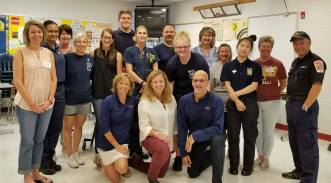 Ryan’s parents created the foundation to raise awareness about Sudden Cardiac Arrest (SCA) and to save lives. The goal is to annually test as many children as possible in an effort to detect heart abnormalities.
Ryan’s parents created the foundation to raise awareness about Sudden Cardiac Arrest (SCA) and to save lives. The goal is to annually test as many children as possible in an effort to detect heart abnormalities.
At the Westfield screening a total of 220, 12 through 26 year olds were screened. Four heart abnormalities were detected by the cardiologist on site! That is four individuals who were not previously aware they had a potential heart issue that could cause SCA. They can now seek appropriate medical care to address their condition.
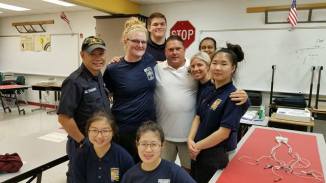 To date the foundation has screened 3846 people and have detected 224 abnormalities! For further information, and future screenings, go to: http://ryanlopynski.org/
To date the foundation has screened 3846 people and have detected 224 abnormalities! For further information, and future screenings, go to: http://ryanlopynski.org/
Olympian Shaun White Has The Same Heart Disease As Jimmy Kimmel’s Son
Jimmy Kimmel captured the hearts of millions Monday night when he shared the emotional story of his newborn son’s medical issues. Only hours after he was born, Kimmel’s son was diagnosed with a heart condition called Tetralogy of Fallot.
Kimmel also brought on a certain Olympic snowboarder who gave him some hope through the whole ordeal.
“When we were told that this operation was going to be happening, everyone told us, ‘Shaun White had this!’” Kimmel explained to White on his show.
White started his career as a professional athlete at the age of 13 and is a two-time Olympic gold medalist with 23 X-Games medals. As a baby, the athlete was diagnosed with the same condition and had the same operation as Kimmel’s son, William John.
“Similar situation, I was just slowly turning blue and my parents knew something was up,” White tol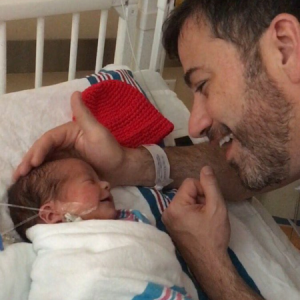 d the late-night host. “The doctors came in and found out that was the scenario, the heart condition.”
d the late-night host. “The doctors came in and found out that was the scenario, the heart condition.”
From the time he was born, the 30-year-old has had three surgeries and has to undergo stress tests with his doctor every few years. White says he was fortunate enough to not have needed an artificial valve, which would eventually need to be replaced.
Thankfully for White, his parents gave him the freedom to be physical and explore sports despite his condition. And now he’s in training for his fourth Olympic run in Korea for the 2018 Winter Olympics.
“Well, you know I have to tell to tell you, whether you realize it or not, you are an inspiration to a lot of families who go through this situation,” Kimmel told White.
“It makes me believe that my son, too, is going to win Olympic gold medals for the United States of America,” he continued.
Never Forget You
This music video with the song entitled, “Never Forget You” by Zara Larsson, was created by Erin in memory of her best friend and older brother, Ryan. I am posting this video to commemorate Ryan’s 8th Angel Birthday from his departure on 4/26/09. A heartfelt and powerful video, it is 4 minutes and 26 seconds long.
“Never Forget You” by Erin Lopynski and Ron Sun
A little background about Erin’s singing…
Erin, has been humming and singing since she was born. Be it the shower, dinner prep, bedtime, road trips or just hanging out on a Saturday afternoon, Ryan’s sister would always sing in her fun-loving way. Her tone, her pitch her tempo…it all came naturally. I suggested voice lessons in grade school, but her music instructor insisted that she was too young and should wait until her voice matured. She never did receive voice lessons to perfect her constantly evolving angelic tone, but that did not stop her from singing.
Erin was invited to sing at church during the holidays, solo’s during high school choir performances, at wedding ceremonies, and even on the cruise ship during our family vacation when she was selected to sing at the finale musical. Erin was discovered at the ship’s Karaoke Bar, and asked to sing, “Hit Me Baby One More Time” by Brittney Spears. They gave her the outfit to perform in, and of course she had already memorized the words from childhood. She rocked it in front of an audience of over 1000 people!
We all envisioned Erin to become the next American Idol as we watched the early shows judged by Simon Cowell. She would belt out a song during a commercial, while standing on the ottoman pretending to be a contestant. So it was not surprising years later that she met up with her friend and videographer, Ron Sun, who asked her to star in his music video.
EKG Screenings Can Protect Young Hearts
The Lopynski family is dedicated to providing EKG screenings for our youth, to honor the legacy of our son, Ryan. In this video parents tell their stories of the reality of Sudden Cardiac Arrest. Let us all be advocates of preventing SCA before it is too late.
One in 300 youth have an undetected heart condition that can put youth at risk for sudden cardiac arrest. But most youth don’t report or recognize symptoms, and EKG screenings are not yet part of well-child or pre-participation sports exams. Parent Heart Watch parents share the stories of their lost youth to help other families avert the tragic loss of life. Take the prevention promise and support our vision to eliminate preventable deaths and disabilities from SCA in youth by 2030.
Parent Heart Watch culminated Heart Month with the debut of
EKG Screenings Can Protect Young Hearts
a short video highlighting the importance of EKG screening
coupled with heart health history and physical examination to protect youth from sudden cardiac arrest and death
Why Aren’t we Doing More to Protect Young Hearts?
Take the Prevention Promise and learn
why we need to screen our youth!

Ryan Lopynski Big Heart Foundation screens kids for heart problems
RICHMOND, Va. (WRIC) — 8News teamed up with the Ryan Lopynski Big Heart Foundation Saturday to make sure your children are heart healthy.
Free heart screenings were given today to catch early warning signs, something that is not usually tested for in children otherwise considered healthy.
8News spoke with Jeremy Lopynski, the mother of Ryan Lopynski who died of sudden cardiac arrest from an undiagnosed heart problem nearly eight years ago. Now she and her husband have devoted themselves to preventing the same from happening to others.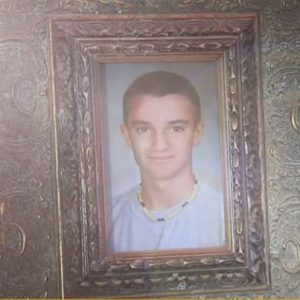
“About 1,000 kids die a day from sudden cardiac arrest,” Jeremy said.
Saturday’s event, which was held at the University of Richmond, gave families a chance to test their kids for cardiac abnormalities, something that isn’t included in a child’s normal yearly physical.
“We go around to different high schools and colleges, screening students from 12 to 26,” Jeremy continued.
8News also spoke with Dori Pierce, a volunteer at the event. She spoke about her admiration for the Lopynski’s.
“I love that they give back and search for something that can truly help people learning if they do have a cardiac condition so they can tend to their cardiac health,” Pierce said.
One parent agreed.
“They gave us something to follow up on, but they don’t think it’s anything serious, but they said we should follow up on it,” Andy Girvin said.
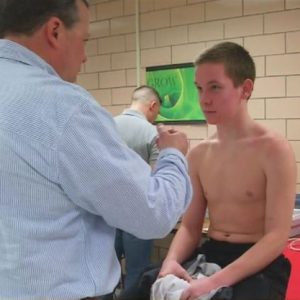 Ryan Lopynski Big Heart Foundation offering free heart screenings
Ryan Lopynski Big Heart Foundation offering free heart screenings
So far, the screenings have saved lives.
“Two kids, individual kids have had to have surgeries with Wolff-Parkinson-White syndrome … it was very serious,” Jeremy said about the results of previous screenings. “And to this day they say, wow, you’ve saved my life, and we try to do that as often as we can.”
To date, the foundation has screened 3,500 people. Jeremy said that they have caught an abnormality every time they have held a screening.
“Every day I miss my son,” Jeremy said. “It’s difficult every day, but this brings my husband and I joy, it really does. We don’t want this to happen to any other family.”
Jeremy Lopynski, Ryan’s mother said if she could, she would do this full time.

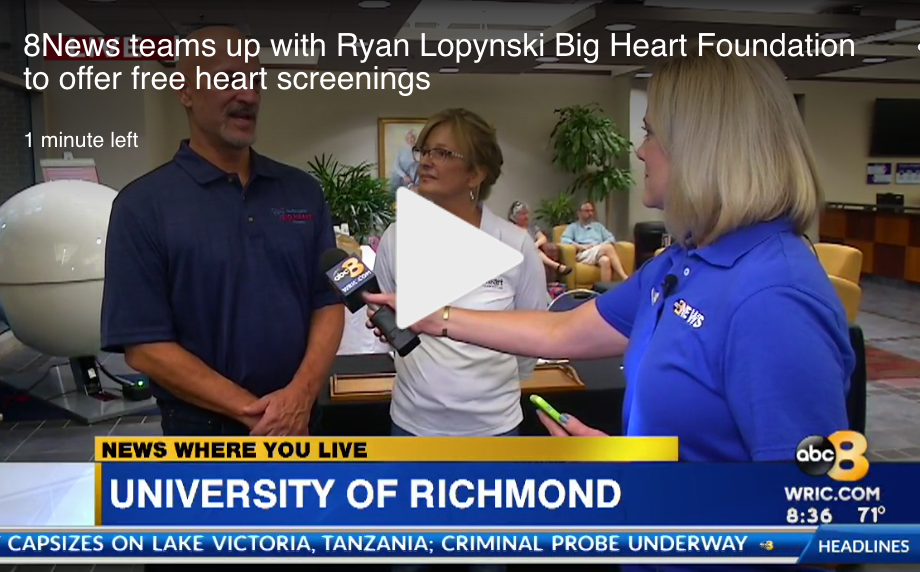


.jpg)

